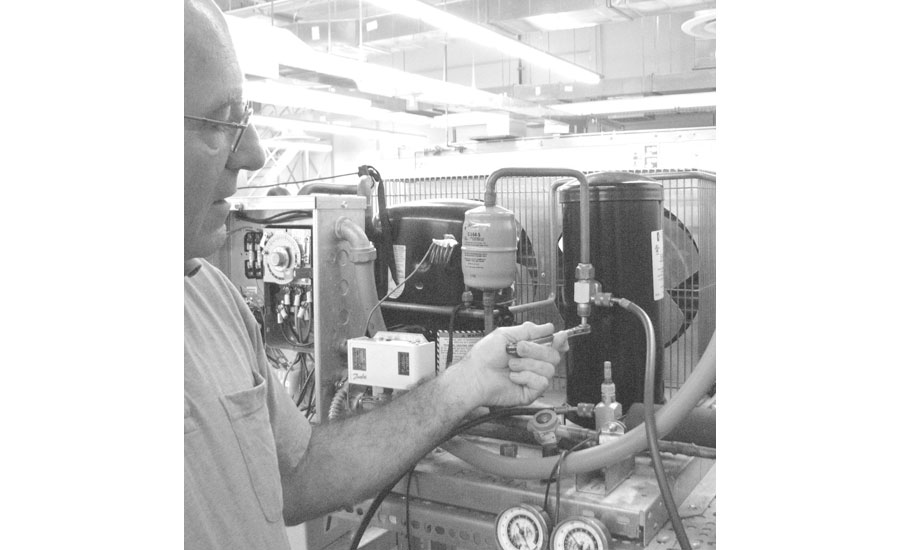A thermostatic expansion valve (TXV) is designed to maintain a specific amount of superheat at the outlet of the evaporator. If the superheat value is too high or too low, the TXV may be the cause. However, before deciding the TXV is defective, all other system causes must first be investigated and ruled out.
If you believe that the TXV is the cause of a system problem, first try adjusting the valve, following any manufacturer’s instructions. For many valves, you can increase the superheat setting by turning the adjustment stem clockwise, and decrease it by turning the stem counterclockwise. Always check the instructions.
If adjusting the valve does not resolve the problem, then the valve is defective and needs to be replaced.
If a TXV is operating with a lower than normal superheat value and a high suction pressure, it may be due to one of these common defects of a TXV:
• Oversized valve
• Leaking TXV seat
• Low superheat adjustment
• Sensing bulb making poor thermal contact
• Wrong thermostatic charge
• Incorrectly located external equalizer
If a TXV is operating with a higher than normal superheat value and a low suction pressure, it may be due to one of these common defects of a TXV:
• Undersized valve
• High superheat adjustment
• Gas charge condensation
• Dead thermostatic element charge
• Wrong thermostatic charge
• Evaporator pressure drop — no external equalizer
• External equalizer location
• Restricted or capped external equalizer
Excerpted and reprinted from Troubleshooting Tips for Servicing Refrigeration Systems by Joe Marchese with Leo A. Meyer, one of the books in the Indoor Environment Technician’s Library series published by LAMA Books.
Publication date: 4/4/2016
Want more HVAC industry news and information? Join The NEWS on Facebook, Twitter, and LinkedIn today!



Report Abusive Comment